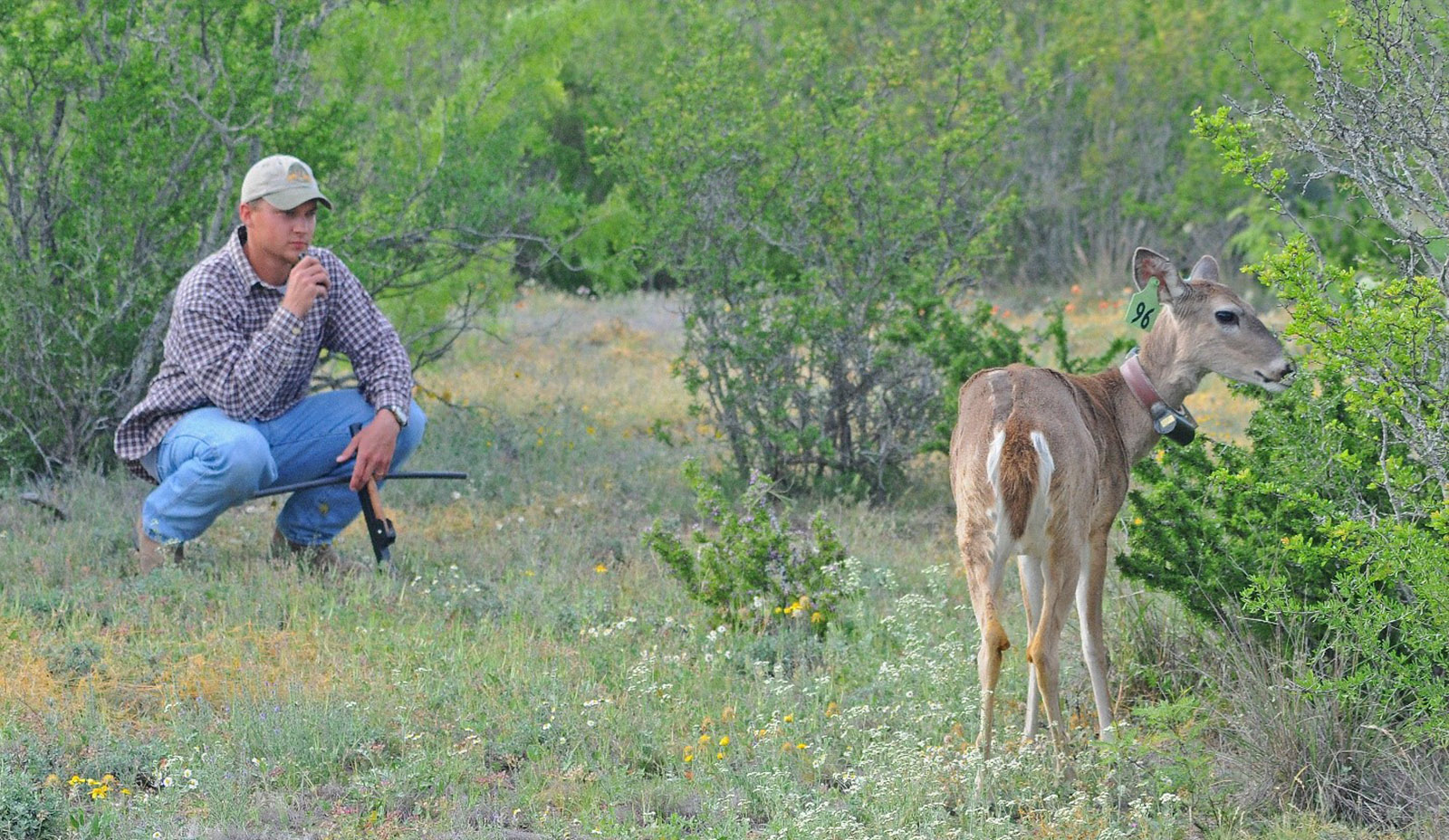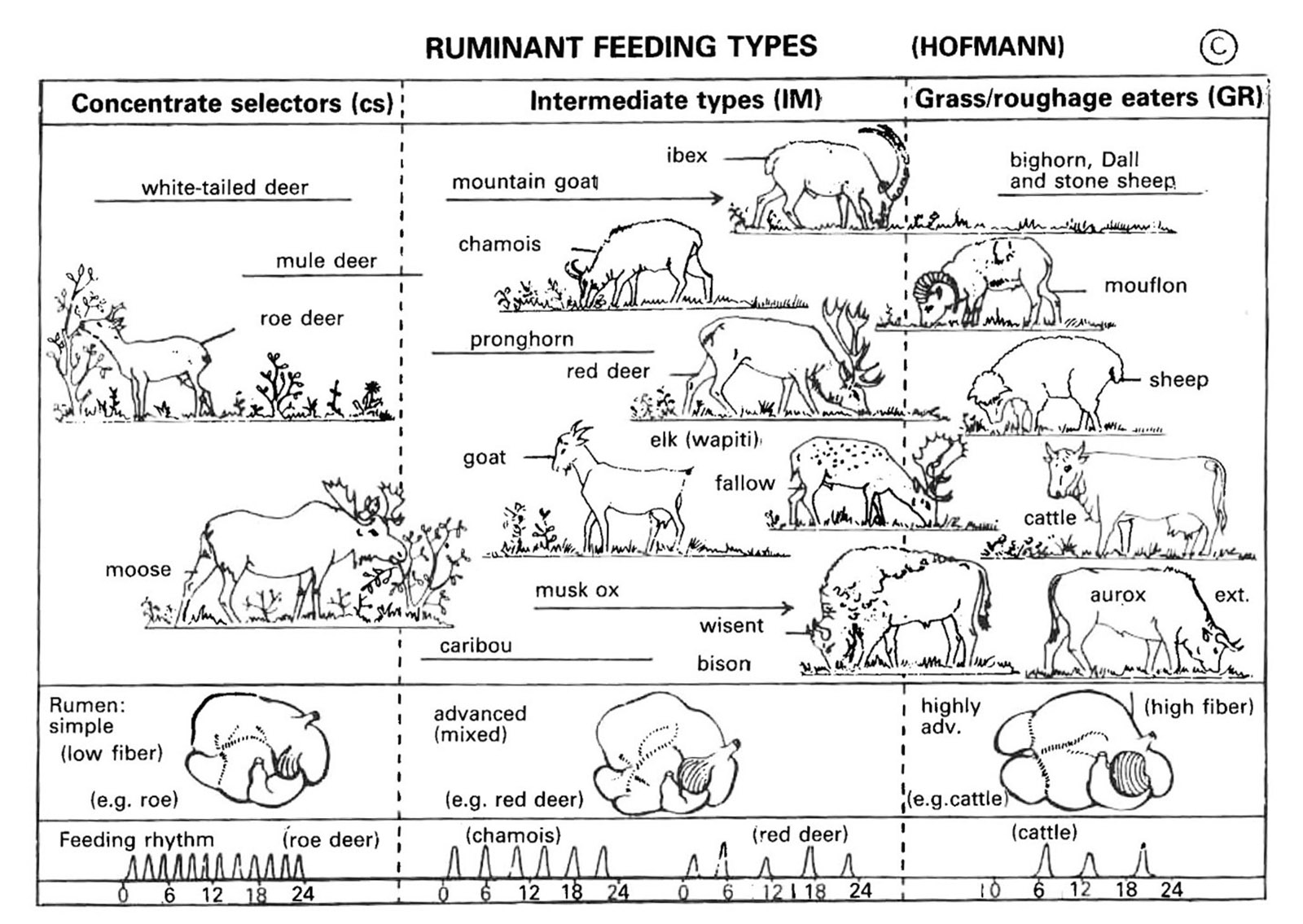By Justin Folks/DWR
I don’t know everything about deer, but I like to think I know a little more about deer foraging behavior than most. In graduate school at the Caesar Kleberg Wildlife Research Institute at Texas A&M University-Kingsville, fellow student Kory Gann and I observed 241,166 bites of various plants and plant parts by deer as part of a long-term deer research project in the infamous “Golden Triangle” of South Texas. Our mission was to collect and analyze deer foraging data to see if deer density affected diet selection, diet quality, or foraging behavior. We learned a lot about deer diets, deer behavior, and—maybe more importantly—how to stay hydrated, tiptoe successfully through cacti, and survive off frozen pizza and Pop Tarts.
The overall study was massive. There were as many as six or eight students, plus technicians, working on the study at any given time (25 students worked on this project in total), collecting data on foraging behavior, vegetation, deer body condition, antler scores, fawn recruitment, deer movements, deer-deer interactions, supplemental feed use, and more. Our work took place on two ranches near Carrizo Springs, Texas.
On each ranch, six high-fence research enclosures were constructed, each one 200 acres in size with a water trough centrally located. Each enclosure was randomly assigned experimental treatments: low, medium, or high densities of deer and either with supplemental pelleted feed or without. Kory and my work occurred in the low density (one deer per 20 acres) and the high density (one deer per 5 acres) enclosures without feed.
We followed two or three tame does around in each enclosure and recorded every bite they took during two hours of foraging time per each doe in spring, summer, fall, and winter. The does lived in the enclosures permanently after release, and we didn’t collect data from them until they had at least four weeks to become accustomed to their enclosure. Using a voice recorder, we recorded the plant species and plant part eaten, the relative size of each bite, and the number of bites. We then collected representative samples of each plant part to conduct nutritional analyses and reconstructed each doe’s diet so we could compare them among density treatments.

The author, as a graduate student, collecting foraging data from “Angie” in spring 2010 when there was abundant rainfall. Photo by David Hewitt
The does Angie and Sally were my favorites, but Beth, Lily, Joan, and Julie were all sweethearts. Skinny would alert me to the presence of rattlesnakes. Dottie and I had a love-hate relationship. All of them were moody when they were super pregnant in the spring (one of MY field seasons, of course).
How Do Deer Digest?
Before I get into the meat of the results and how it relates to deer diets here and elsewhere in Part 2, I think it’s important to provide some background on deer physiology and foraging theory. Deer are ruminants (like cattle, sheep, goats, and others), and have a four-chambered stomach.
The rumen, the largest chamber, serves as the main fermentation vat where bacteria and enzymes break down difficult-to-digest vegetative material into compounds and nutrients that can be used by the animal. Deer and other ruminants will bite, incompletely chew, and swallow vegetation when foraging, then find a secure resting place to chew their cud (or ruminate) to further process that food in safety. When an animal ruminates, their rumen contracts and forces a wad of partially digested food (“cud” or bolus) back into its mouth, where it chews the food up more, swallows, and repeats.
Even when not ruminating, the animal’s rumen constantly contracts in a wave-like motion to mix up all of the vegetative material, liquid, and bacteria to help ensure a more complete breakdown of fiber that sort of “locks up” nutrients inside of plant cell walls, and the fiber itself is broken down into useable nutrients. When rumen contents are sufficiently digested, they are passed on to the reticulum, omasum, and then abomasum (the other three stomach chambers) for further digestion before entering the intestines. The time it takes for food to pass through the entire digestive system of an animal is called the retention time.
The more fiber a food contains, the longer it must be retained in the rumen to break down that fiber and sufficiently extract nutrients. Generally, the relative size and complexity of a species’ four stomach chambers determines the retention time and the types of food it will eat. For example, cattle have large rumens and omasums, and grasses contain a lot of difficult-to-digest fiber. They can, and do, predominantly eat grass because it can sit in their stomach longer and digest more completely. Cattle and other grazers have evolved to be able to eat more fibrous foods, and their larger, more complex stomachs contain types of bacteria that are good at handling those foods.
Opposite of cattle, whitetails are considered concentrate selectors (or browsers), meaning they prefer eating foods with less and more easily digestible fiber. Concentrate selectors, like deer, select plants and plant parts rich in easily digestible and highly nutritious plant cell contents like starch, plant protein, fat, and oil (i.e., concentrate). If a grazer eats too much concentrate, it can cause serious physiological issues (like bloat, rumen acidosis, etc.) because their system is not equipped to handle it. This can even harm concentrate selectors when natural, high-quality foods are typically scarce (for example, feeding a deer corn in winter can kill them). Between concentrate selectors and grazers are a group of “intermediates,” like elk, pronghorn, and caribou, that can handle more grass in their diets than whitetails, but still utilize a fair amount of browse. See chart below for a diagram of ruminant feeding types and examples of each.

There’s a notion in ecology known as Optimal Foraging Theory, which is basically the idea that an animal will focus on the highest-quality foods until they become scarce, then switch to the next best thing, and so on. The premise makes sense, and it’s somewhat related to how density dependence (another ecological theory) operates.
Density dependence is the idea that an animal population becomes self-limiting as it reaches the habitat’s carrying capacity (the number of animals a habitat can support). If individuals in a local population eat up all the good foods, it leaves only the low-quality stuff behind, which limits the productivity of each animal, and reproductive output slows or stops. (NOTE: If a population overshoots carrying capacity, it can damage the habitat so much that future carrying capacity is actually reduced.) The overall goal of the entire study was to put the theory of density dependence to the test in a highly variable environment like South Texas, since most work demonstrating density dependence has been done in milder, wetter climates.
Make sure to read Forage, Forbs, and Mast: A Primer of Deer Diets Part 2 to find out what this study revealed.
Justin Folks is DWR’s deer project leader.


